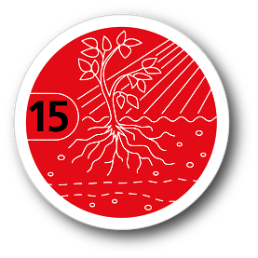- What methods and indicators allow us to determine and assess pollution levels in, and the functional performance of, our soils? In the complex interplay between physical, chemical and biological processes in Swiss soils, how are we to define pollution thresholds, and where do we place them? How do we distinguish the bioavailable pollutant content from the total pollutant content determined to date? What models and assessment tools can be used to analyse and interpret the available information on Swiss soils in order to provide a decision-making basis for the main users (Swiss federal government and cantons; farmers, contractors, extension workers)?
- What is the pollution situation, productivity and ecological functionality of our soils today, and how do these parameters evolve over time? What are the monitoring and early detection findings reached by the Swiss Soil Monitoring Network (NABO) and Agricultural Environmental Monitoring (AEM)? What recommendations can be derived from these findings? How do pollutants and extraneous substances (pesticides, antibiotics, steroid hormones, nanoparticles, microplastics, etc.) behave in the soil, and what influence do these have on the main soil functions (including soil structure, nutrient uptake and loss, resilience) and soil fertility?
- Via what farming and use measures can the productivity and ecological functionality of agriculturally used soils be maintained or improved? How do different farming methods (organic, PEP, no-till, etc.) affect essential soil functions such as yield formation, nutrient recycling, carbon storage, and resistance to disturbances and stress? How does the use of machines and auxiliary substances such as biochar affect soils and their functions, especially soil fertility or soil regulatory and storage functions? What site- and situation-specific decision-making aids and policy control instruments can be offered?
- How, under the influence of agricultural soil-use measures, do soil processes affect resource efficiency, carbon and nutrient cycles? How do agricultural emissions act on mineral or organic soils?
- On the basis of what criteria and with the help of what measures can degraded or anthropogenic soils with limited production potential be upgraded to crop-rotation land? How do technical soil-upgrading measures affect soil functions and soil ecosystem services?
- What soil information and what concepts, tools and procedures allow the targeted resolution of conflicts associated with soil use (agriculture, forest, housing estate, dedicated water areas) and soil functions (production, ecology and nature conservation, recreation and leisure), bearing in mind a soil assessment based on the particularities of the site?
- How does biodiversity in the soil influence the terrestrial ecosystem and soil functions?
Sustainable and locally adapted management of soil functions and services for tomorrow’s agriculture

Fertile soils are a scarce but indispensable production factor for agriculture. In addition to primary production, agriculturally used soils provide further important ecosystem services such as CO2 storage, drinking-water filtration, flood protection and control, as well as nutrient storage and recycling. The biological processes in the soil ecosystem are, however, highly complex and only partially understood.
Today, agricultural soils in Switzerland are exposed to hazards and stresses which lead to a decrease in their fertility and productivity as well as to quantitative area losses. A better understanding of the processes taking place in the soil, the recording of the current stress situation of Swiss soils and the development of recommendations for sustainable, site-appropriate soil management and the protection of soil functions is therefore of key importance. Furthermore, policy-makers and practitioners require soil information and methodologies for targeted land-use planning, the maintenance of crop-rotation land, and spatial planning.
Scientific Objectives and Research Questions
Research Projects
OverviewFurther Information





